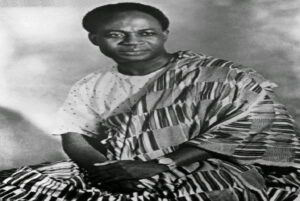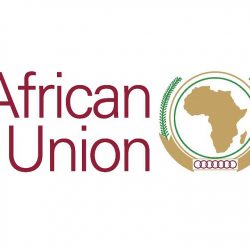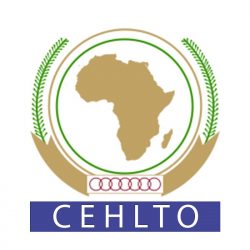SUMAILA NDEWURA JAKPA
Sumaila Ndewura Jakpa (circa 1600-1666) was, according to the most accessible and widely-known version of Gonja ( Ngbanya) oral traditions, the conquering founder of the Gonja state, located in what is now the lower third of the Northern Region of Ghana.
It is said that Jakpa led a band of invaders from “Mande” – possibly the Mali region on the Upper Niger River – and that although the in invaders were numerically magnificent, they nonetheless proved irresistible by virtue firstly of their superior weapons and discipline, secondly by virtue of the prayers of Jakpa’s mallam (lslamic clerk), Muhamman al-Abyad, also known as Fatigi Morukpe , and thirdly by virtue of the support of the local fetish, Senyou.
Jakpa crossed the Black Volta (which now forms part of the frontier between the Ivory Coast and Northern Ghana), and made an alliance with the Vogala, the enemies of the Dagomba. With the support of the fetish Senyou, and thanks to his alliance with his imam Fatigi Morukpe, the traditional ancestors of the imams (political heads of the Islamic community) of Buipe, 60 mi (96 km) southwest of Tamale, he expelled the Dagomba warriors who were still resisting his advance from the Bole area in what is now northeast Ghana.
Jakpa’s alliance with Fatigi Morukpe appears to have been a diplomatic move to win the allegiance of the Muslims of the area, while his reliance on the fetish Senyou was designed to placate the local Guan people whom the Dagomba had conquered before his arrival. Only Bole resisted him, but he conquered it after a battle. He then made his eldest son, Burelanyon, the chief of Nyanga, northeast of Bole, and that town became the seat of Yagbumwura (paramount chief of the Gonja people) after Jakpa’s death.
Jakpa subsequently attacked Damongo, 70 mi (112 km) west-south-west of Tamale, which the Dagomba evacuated without a struggle. He then turned southward towards Buipe, where the chief of Buipe, the Hinimpasora, submitted to him. He therefore turned south and invaded Brong territory, in what is now western Ghana, and is said to have gone as far as Prang, 100 mi (160 km) northeast of Kumase. Then, turning north across the Volta near Kafaba, about 15 mi (24 km) southwest of the market town of Salaga in what is now northeast Ghana, he expelled the Nanumba ( Narium) people from the Salaga region. He then again attacked the Dagomba, who resisted bravely, defeating them, and seizing Daboya from them. It was at this battle that Na Darziogo, the 11th ruler of the Dagomba was killed. The date was probably in about 1620. The Dagomba then moved their capital from Yendi Dabari eastward to Yendi, 55 mi (88 km) east of Tamale, in Konkomba territory, and raided the Gonja from there for three decades.
Meanwhile, according to tradition, Jakpa’s armies advanced to the borders of what are now the modern states of Dahomey and Nigeria.
Jakpa is said to have met with disaster during a war with the Brong people. He was killed at a place then called Brumasi, in Brong territory. According to tradition, he was buried at Buipe, which then became a town sacred to the Gonja. His tomb is protected by a guardian, the Buipewura; and though the Buipewura is not eligible for the skin (stool or throne) of the Yagbumwura, upon his election the Yabumwura has to offer customary rites to him. The death of the Yagbumwura must also be reported first to the Buipewura.
Intensive studies of the many variations of Gonja oral tradition have thrown considerable doubt upon this widely accepted account of Jakpa’s life. These studies have suggested firstly that “Jakpa” and “Ndewura” are not proper names, but titles, which are said to mean “Spear holder” and ” Master of many towns” respectively; secondly, that the Gonja national hero was not even among the original invaders who founded the state towards the close of the 16th century, but a successor who decisively consolidated their work; and thirdly that he was possibly Jakpa Lanta, who may have reigned between about 1623/1624 and 1666/1667.
A. ILIASU






